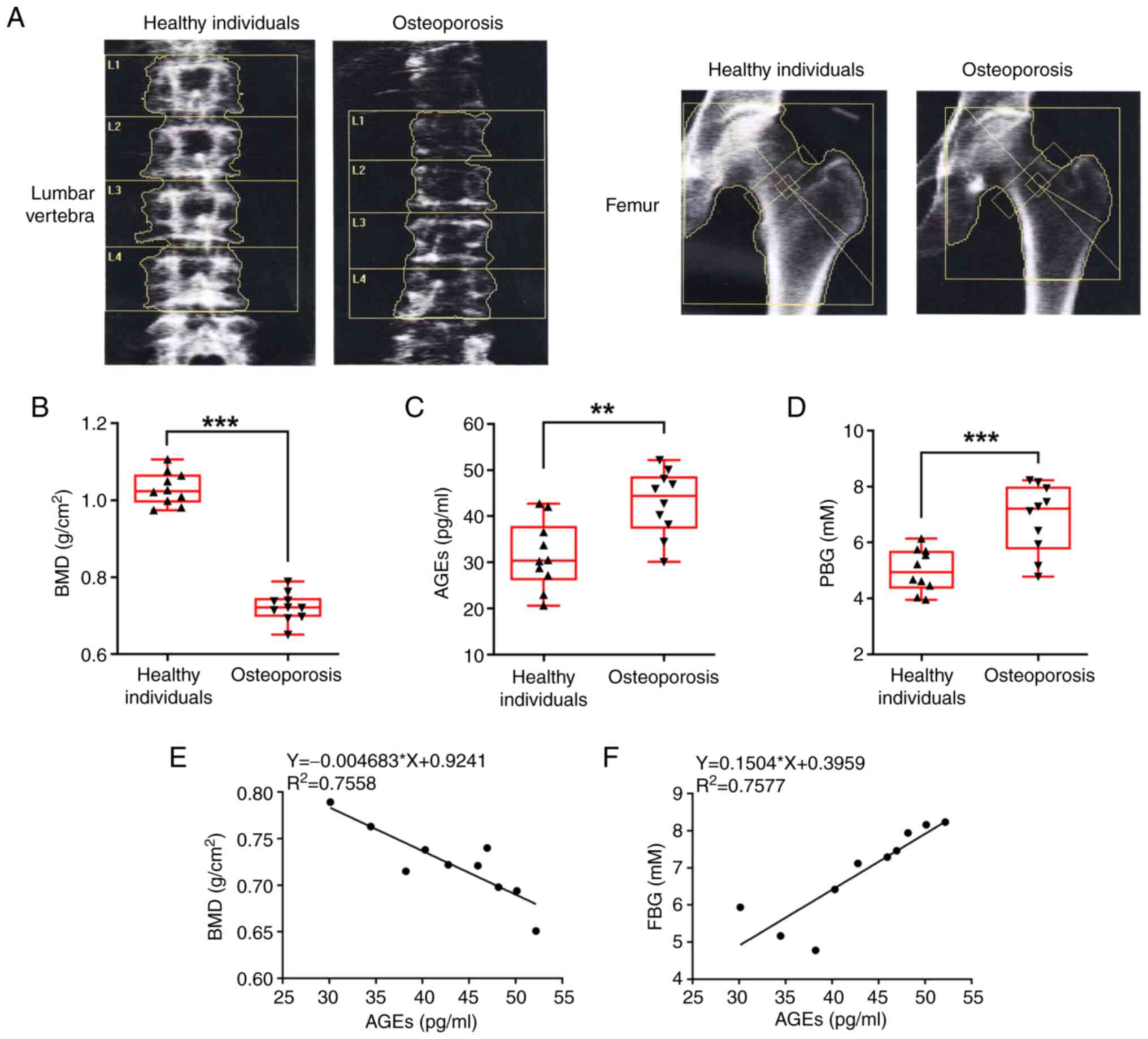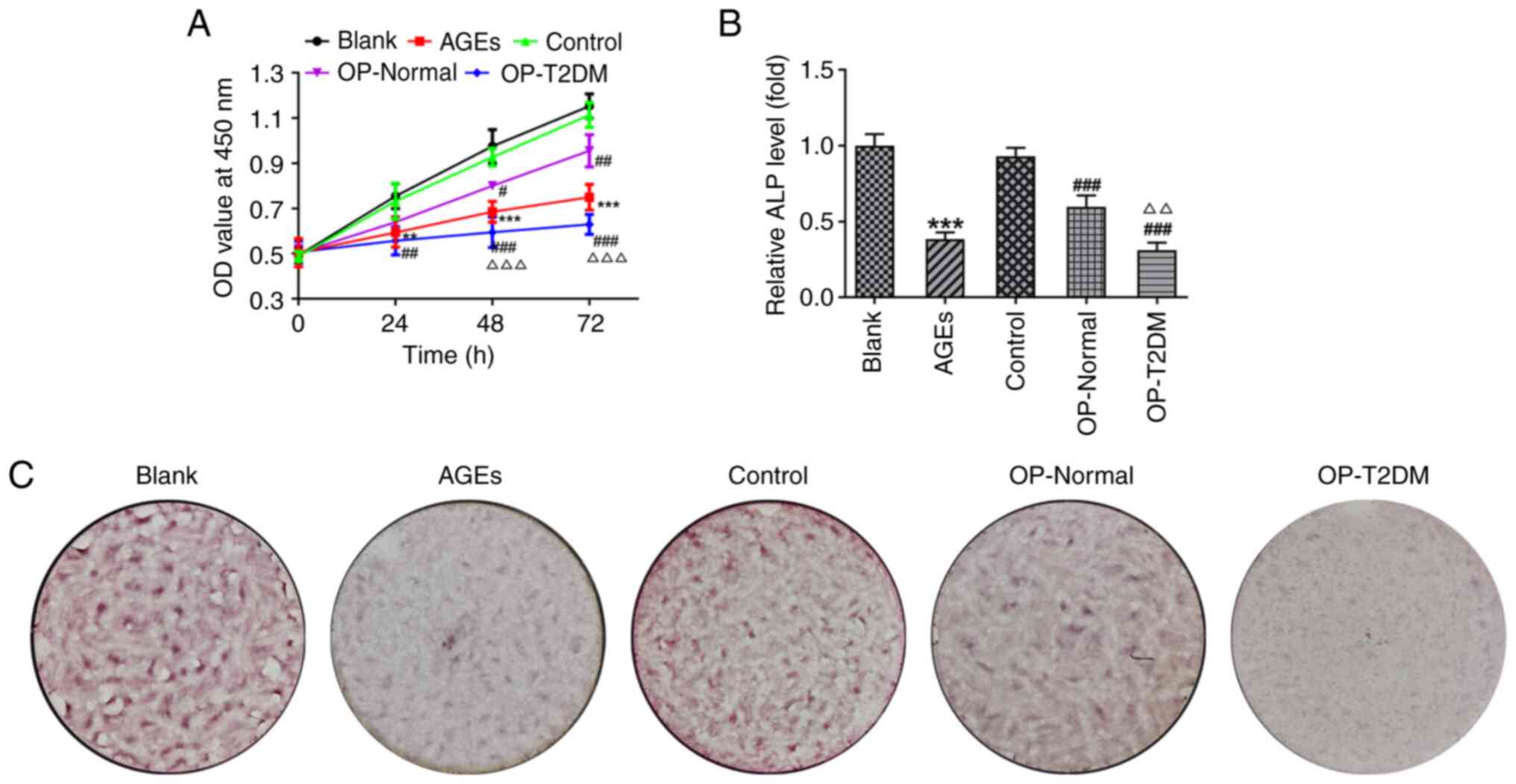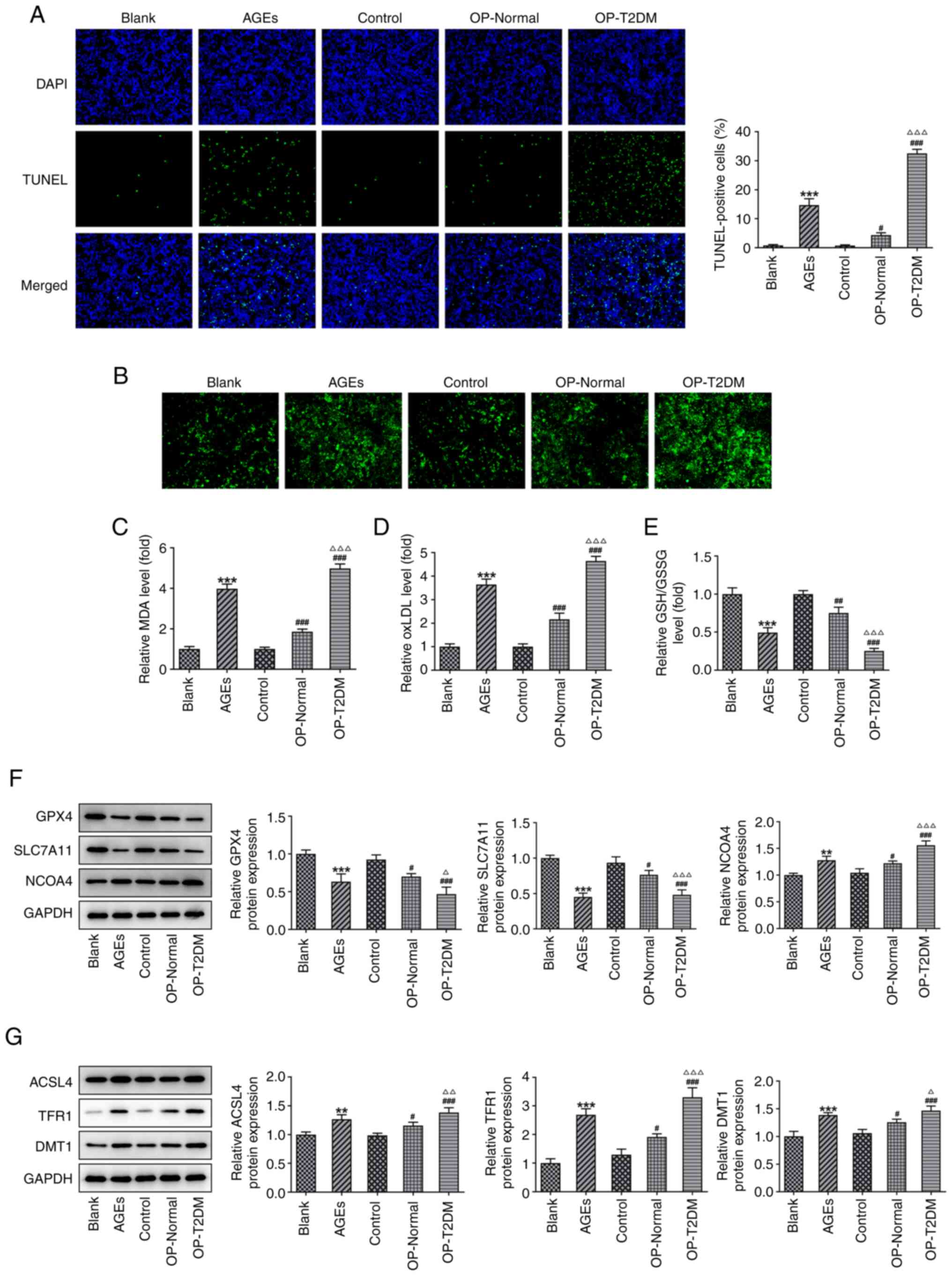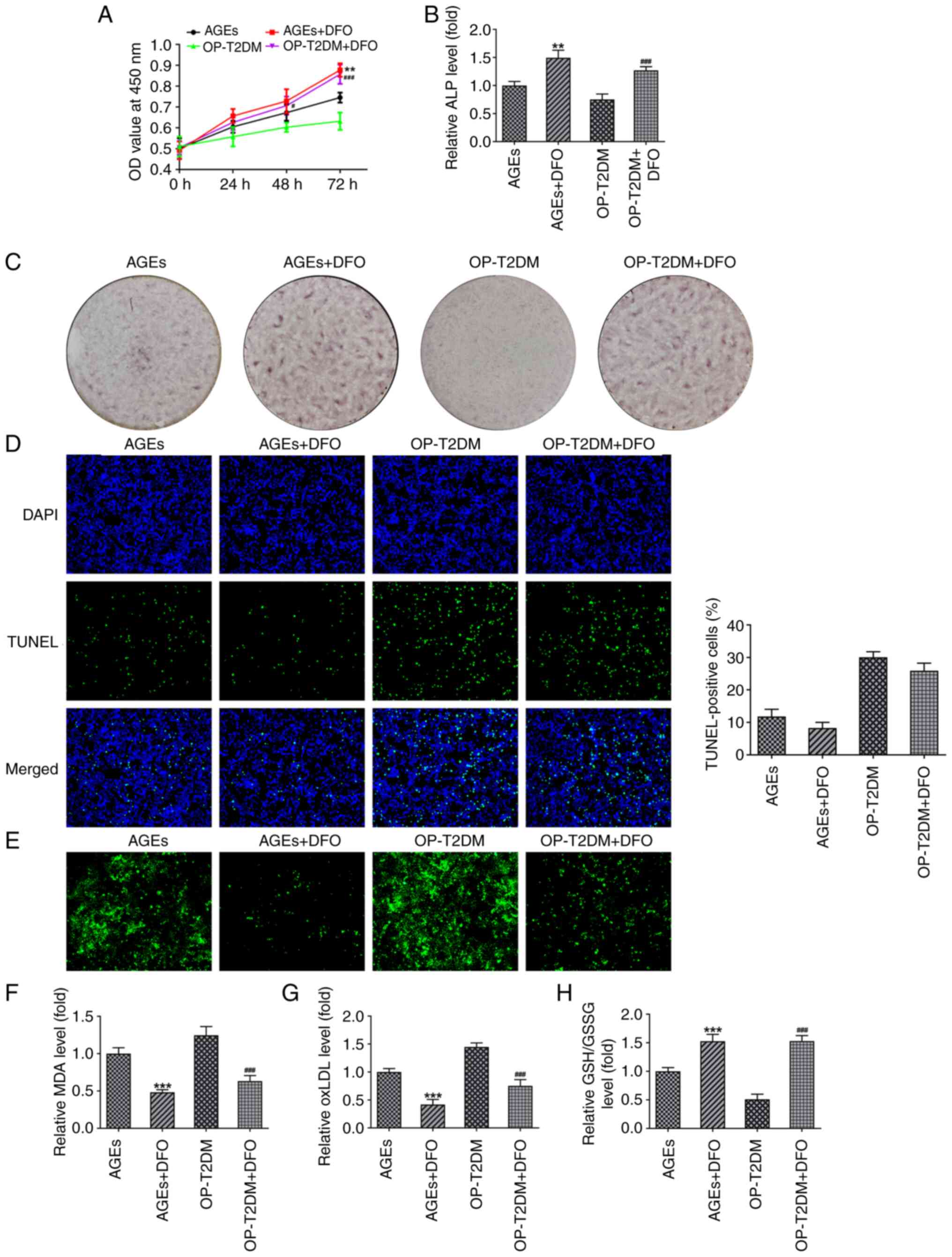|
1
|
Baccaro LF, Conde DM, Costa-Paiva L and
Pinto-Neto AM: The epidemiology and management of postmenopausal
osteoporosis: A viewpoint from Brazil. Clin Interv Aging.
10:583–591. 2015. View Article : Google Scholar : PubMed/NCBI
|
|
2
|
Armas LA and Recker RR: Pathophysiology of
osteoporosis: New mechanistic insights. Endocrinol Metab Clin North
Am. 41:475–486. 2012. View Article : Google Scholar : PubMed/NCBI
|
|
3
|
Reid IR: A broader strategy for
osteoporosis interventions. Nat Rev Endocrinol. 16:333–339. 2020.
View Article : Google Scholar : PubMed/NCBI
|
|
4
|
Ensrud KE, Ewing SK, Taylor BC, Fink HA,
Stone KL, Cauley JA, Tracy JK, Hochberg MC, Rodondi N and Cawthon
PM; Study of Osteoporotic Fractures Research Group, : Frailty and
risk of falls, fracture, and mortality in older women: The study of
osteoporotic fractures. J Gerontol A Biol Sci Med Sci. 62:744–751.
2007. View Article : Google Scholar : PubMed/NCBI
|
|
5
|
Johnston CB and Dagar M: Osteoporosis in
older adults. Med Clin North Am. 104:873–884. 2020. View Article : Google Scholar : PubMed/NCBI
|
|
6
|
Kurra S, Fink DA and Siris ES:
Osteoporosis-associated fracture and diabetes. Endocrinol Metab
Clin North Am. 43:233–243. 2014. View Article : Google Scholar : PubMed/NCBI
|
|
7
|
Nowotny K, Jung T, Höhn A, Weber D and
Grune T: Advanced glycation end products and oxidative stress in
type 2 diabetes mellitus. Biomolecules. 5:194–222. 2015. View Article : Google Scholar : PubMed/NCBI
|
|
8
|
Goh SY and Cooper ME: Clinical review: The
role of advanced glycation end products in progression and
complications of diabetes. J Clin Endocrinol Metab. 93:1143–1152.
2008. View Article : Google Scholar : PubMed/NCBI
|
|
9
|
Yamamoto M and Sugimoto T: Advanced
glycation end products, diabetes, and bone strength. Curr
Osteoporos Rep. 14:320–326. 2016. View Article : Google Scholar : PubMed/NCBI
|
|
10
|
Alikhani M, Alikhani Z, Boyd C, MacLellan
CM, Raptis M, Liu R, Pischon N, Trackman PC, Gerstenfeld L and
Graves DT: Advanced glycation end products stimulate osteoblast
apoptosis via the MAP kinase and cytosolic apoptotic pathways.
Bone. 40:345–353. 2007. View Article : Google Scholar : PubMed/NCBI
|
|
11
|
Notsu M, Yamaguchi T, Okazaki K, Tanaka K,
Ogawa N, Kanazawa I and Sugimoto T: Advanced glycation end product
3 (AGE3) suppresses the mineralization of mouse stromal ST2 cells
and human mesenchymal stem cells by increasing TGF-β expression and
secretion. Endocrinology. 155:2402–2410. 2014. View Article : Google Scholar : PubMed/NCBI
|
|
12
|
Meng HZ, Zhang WL, Liu F and Yang MW:
Advanced glycation end products affect osteoblast proliferation and
function by modulating autophagy via the receptor of advanced
glycation end Products/Raf Protein/Mitogen-activated protein
Kinase/Extracellular Signal-regulated Kinase Kinase/Extracellular
Signal-regulated Kinase (RAGE/Raf/MEK/ERK) pathway. J Biol Chem.
290:28189–28199. 2015. View Article : Google Scholar : PubMed/NCBI
|
|
13
|
Ma H, Wang X, Zhang W, Li H, Zhao W, Sun J
and Yang M: Melatonin suppresses ferroptosis induced by high
glucose via activation of the Nrf2/HO-1 signaling pathway in type 2
diabetic osteoporosis. Oxid Med Cell Longev. 2020:90676102020.
View Article : Google Scholar : PubMed/NCBI
|
|
14
|
Zhou B, Liu J, Kang R, Klionsky DJ,
Kroemer G and Tang D: Ferroptosis is a type of autophagy-dependent
cell death. Semin Cancer Biol. 66:89–100. 2020. View Article : Google Scholar : PubMed/NCBI
|
|
15
|
Lu J, Yang J, Zheng Y, Chen X and Fang S:
Extracellular vesicles from endothelial progenitor cells prevent
steroid-induced osteoporosis by suppressing the ferroptotic pathway
in mouse osteoblasts based on bioinformatics evidence. Sci Rep.
9:161302019. View Article : Google Scholar : PubMed/NCBI
|
|
16
|
Xia D, Wu J, Xing M, Wang Y, Zhang H, Xia
Y, Zhou P and Xu S: Iron overload threatens the growth of
osteoblast cells via inhibiting the PI3K/AKT/FOXO3a/DUSP14
signaling pathway. J Cell Physiol. Jan 29–2019.(Epub ahead of
print). doi: 10.1002/jcp.28217. View Article : Google Scholar
|
|
17
|
Wang X, Ma H, Sun J, Zheng T, Zhao P, Li H
and Yang M: Mitochondrial ferritin deficiency promotes osteoblastic
ferroptosis via mitophagy in type 2 diabetic osteoporosis. Biol
Trace Elem Res. 200:298–307. 2022. View Article : Google Scholar : PubMed/NCBI
|
|
18
|
Tsukushi S, Katsuzaki T, Aoyama I,
Takayama F, Miyazaki T, Shimokata K and Niwa T: Increased
erythrocyte 3-DG and AGEs in diabetic hemodialysis patients: Role
of the polyol pathway. Kidney Int. 55:1970–1976. 1999. View Article : Google Scholar : PubMed/NCBI
|
|
19
|
Kim HJ and Kim SG: Alterations in cellular
Ca(2+) and free iron pool by sulfur amino acid deprivation: The
role of ferritin light chain down-regulation in prooxidant
production. Biochem Pharmacol. 63:647–657. 2002. View Article : Google Scholar : PubMed/NCBI
|
|
20
|
Sun Y, Zheng Y, Wang C and Liu Y:
Glutathione depletion induces ferroptosis, autophagy, and premature
cell senescence in retinal pigment epithelial cells. Cell Death
Dis. 9:7532018. View Article : Google Scholar : PubMed/NCBI
|
|
21
|
Cheng YZ, Yang SL, Wang JY, Ye M, Zhuo XY,
Wang LT, Chen H, Zhang H and Yang L: Irbesartan attenuates advanced
glycation end products-mediated damage in diabetes-associated
osteoporosis through the AGEs/RAGE pathway. Life Sci. 205:184–192.
2018. View Article : Google Scholar : PubMed/NCBI
|
|
22
|
Sanguineti R, Puddu A, Mach F, Montecucco
F and Viviani GL: Advanced glycation end products play adverse
proinflammatory activities in osteoporosis. Mediators Inflamm.
2014:9758722014. View Article : Google Scholar : PubMed/NCBI
|
|
23
|
Li Y, Wang L, Zhang M, Huang K, Yao Z, Rao
P, Cai X and Xiao J: Advanced glycation end products inhibit the
osteogenic differentiation potential of adipose-derived stem cells
by modulating Wnt/β-catenin signalling pathway via DNA methylation.
Cell Prolif. 53:e128342020. View Article : Google Scholar : PubMed/NCBI
|
|
24
|
de Paula FJ, Horowitz MC and Rosen CJ:
Novel insights into the relationship between diabetes and
osteoporosis. Diabetes Metab Res Rev. 26:622–630. 2010. View Article : Google Scholar : PubMed/NCBI
|
|
25
|
Saito M, Fujii K, Mori Y and Marumo K:
Role of collagen enzymatic and glycation induced cross-links as a
determinant of bone quality in spontaneously diabetic WBN/Kob rats.
Osteoporos Int. 17:1514–1523. 2006. View Article : Google Scholar : PubMed/NCBI
|
|
26
|
Yang DH, Chiang TI, Chang IC, Lin FH, Wei
CC and Cheng YW: Increased levels of circulating advanced glycation
end-products in menopausal women with osteoporosis. Int J Med Sci.
11:453–460. 2014. View Article : Google Scholar : PubMed/NCBI
|
|
27
|
Lee WC, Guntur AR, Long F and Rosen CJ:
Energy metabolism of the osteoblast: Implications for osteoporosis.
Endocr Rev. 38:255–266. 2017. View Article : Google Scholar : PubMed/NCBI
|
|
28
|
Sanguineti R, Storace D, Monacelli F,
Federici A and Odetti P: Pentosidine effects on human osteoblasts
in vitro. Ann NY Acad Sci. 1126:166–172. 2008. View Article : Google Scholar : PubMed/NCBI
|
|
29
|
Franke S, Rüster C, Pester J, Hofmann G,
Oelzner P and Wolf G: Advanced glycation end products affect growth
and function of osteoblasts. Clin Exp Rheumatol. 29:650–660.
2011.PubMed/NCBI
|
|
30
|
Lee EJ, Kang MK, Kim YH, Kim DY, Oh H, Kim
SI, Oh SY, Na W and Kang YH: Coumarin ameliorates impaired bone
turnover by inhibiting the formation of advanced glycation end
products in diabetic osteoblasts and osteoclasts. Biomolecules.
10:10522020. View Article : Google Scholar : PubMed/NCBI
|
|
31
|
Dariya B and Nagaraju GP: Advanced
glycation end products in diabetes, cancer and phytochemical
therapy. Drug Discov Today. 25:1614–1623. 2020. View Article : Google Scholar : PubMed/NCBI
|
|
32
|
Ni S, Yuan Y, Qian Z, Zhong Z, Lv T, Kuang
Y and Yu B: Hypoxia inhibits RANKL-induced ferritinophagy and
protects osteoclasts from ferroptosis. Free Radic Biol Med.
169:271–282. 2021. View Article : Google Scholar : PubMed/NCBI
|
|
33
|
Casati L, Pagani F, Fibiani M, Lo Scalzo R
and Sibilia V: Potential of delphinidin-3-rutinoside extracted from
Solanum melongena L. as promoter of osteoblastic MC3T3-E1
function and antagonist of oxidative damage. Eur J Nutr.
58:1019–1032. 2019. View Article : Google Scholar : PubMed/NCBI
|
|
34
|
Hirschhorn T and Stockwell BR: The
development of the concept of ferroptosis. Free Radic Biol Med.
133:130–143. 2019. View Article : Google Scholar : PubMed/NCBI
|
|
35
|
Mirlohi MS, Yaghooti H, Shirali S,
Aminasnafi A and Olapour S: Increased levels of advanced glycation
end products positively correlate with iron overload and oxidative
stress markers in patients with β-thalassemia major. Ann Hematol.
97:679–684. 2018. View Article : Google Scholar : PubMed/NCBI
|
|
36
|
Chen SH, Yuan KC, Lee YC, Shih CK, Tseng
SH, Tinkov AA, Skalny AV and Chang JS: Iron and advanced glycation
end products: Emerging role of Iron in androgen deficiency in
obesity. Antioxidants (Basel). 9:2612020. View Article : Google Scholar : PubMed/NCBI
|
|
37
|
He M, Siow RC, Sugden D, Gao L, Cheng X
and Mann GE: Induction of HO-1 and redox signaling in endothelial
cells by advanced glycation end products: A role for Nrf2 in
vascular protection in diabetes. Nutr Metab Cardiovasc Dis.
21:277–285. 2011.PubMed/NCBI
|
|
38
|
Ko SY, Chang SS, Lin IH and Chen HI:
Suppression of antioxidant Nrf-2 and downstream pathway in H9c2
cells by advanced glycation end products (AGEs) via ERK
phosphorylation. Biochimie. 118:8–14. 2015. View Article : Google Scholar : PubMed/NCBI
|
|
39
|
Suttner DM and Dennery PA: Reversal of
HO-1 related cytoprotection with increased expression is due to
reactive iron. FASEB J. 13:1800–1809. 1999. View Article : Google Scholar : PubMed/NCBI
|
|
40
|
Xu T, Ding W, Ji X, Ao X, Liu Y, Yu W and
Wang J: Molecular mechanisms of ferroptosis and its role in cancer
therapy. J Cell Mol Med. 23:4900–4912. 2019. View Article : Google Scholar : PubMed/NCBI
|


















